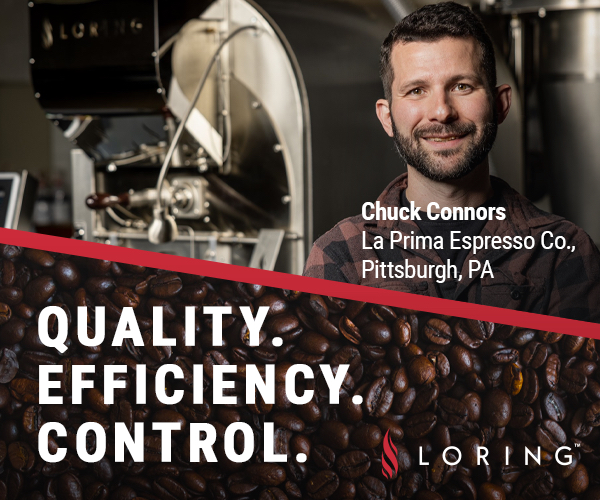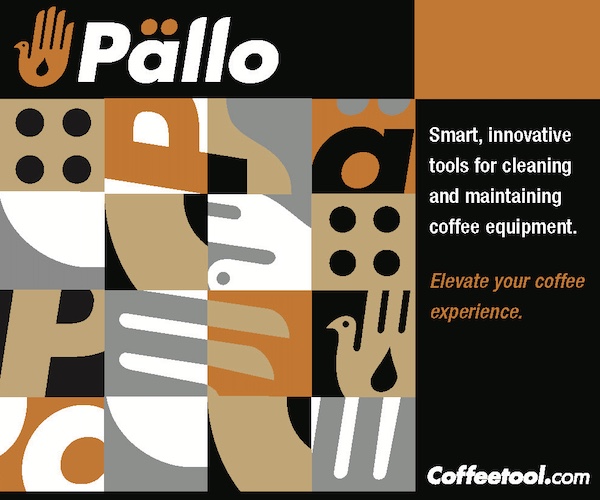Mandatory mask usage, maximum ventilation, air purifiers and time limits are four of the most useful and actionable tools for coffee shop owners in keeping their employees and customers safe from the spread of COVID-19, according to the lessons from a new video called “The Science of COVID-19 Safety for Coffee Businesses.”
As fate would have it, one of the United States’ leading voices on how moisture molecules move through the air — a hot topic in the COVID-19 pandemic era — also happens to be a Grade A coffee geek.
That person is William Ristenpart, a chemical engineer at UC Davis who specializes in “complex transport phenomena,” such as how airborne pathogens are disbursed. He’s also the director of the UC Davis Coffee Center.
“These worlds collided when it comes to COVID-19,” Peter Giuliano, the chief research officer of the Specialty Coffee Association, which is engaged in multiple collaborations with the UC Davis Coffee Center, recently told Daily Coffee News.
One of their most fascinating collaborations to date has resulted in the educational and instructional video for coffee shop owners wishing to protect their businesses from the spread of the disease, particularly as the colder weather moves in.
In the four-part video spanning nearly two hours, Ristenpart walks viewers through a number fundamental concepts related to airborne disease transmission, and specifically how COVID-19 is spread through exposure to droplets — typically from mask-less people speaking directly at other people — or through exposure to aerosolized particles, which may float around the room with the breeze much like aromas.
This is required viewing for any coffee shop owner or manager, or for anyone interested in better understanding how this disease is spread. It also clears up numerous misconceptions surrounding transmission and the safety of indoor environments.
We won’t attempt to summarize it all, but we will focus on the four major takeaways as outlined in part four of the video, in which Ristenpart applies the lessons and theories learned through the first three parts to coffee shop operations.
Masks Are Mandatory
The video repeatedly cites a well-documented “super-spreader” event at a Starbucks on the outskirts of Seoul, South Korea, where it was determined that one infected but asymptomatic solo customer was seated for roughly two hours next to a ductless air-conditioning unit.
Contact tracing led officials to conclude that some 56 people were infected, likely from aerosolized particles from the customer’s breathing that were being spread through the shop by the AC unit. None of the employees, all of whom were wearing masks, were infected.
On the efficacy of masks in curbing transmission of COVID-19, Ristenpart said, “At least within the scientific community, it’s not controversial.”
In this section, Ristenpart also addressed the efficacy of plastic room dividers. While they can be useful at high-traffic coffee bar counters, there may be little advantage in investing in a complex series of dividers throughout the room, he said.
“These plastic dividers will help protect against plume spread — in other words, they’ll help protect against someone coughing directly in your face,” said Ristenpart. “But they’re going to do little or nothing to block aerosol spread through the room.”
Increase Ventilation
Giulano told DCN that ventilation and airflow may be the biggest safety competency among coffee shops moving forward in the coming months. He likened its importance to that of food safety.
“I think it’s the biggest challenge for small business operators, and the biggest opportunity,” Giuliano said. “Every business owner should now know how their HVAC system is working and how much fresh air is being circulated… If people come away from this with that concept — I need to call my HVAC person tomorrow — that will be a huge win.”
Ventilation hinges on the HVAC industry standard metric of air changes per hour, or ACH — i.e., how many times per hour the indoor air is fully replaced by fresh air that has been introduced to the indoor environment, not merely recirculated.
Consider the super-spreader events such as the Seoul Starbucks, another well-documented restaurant case in Guangzhou, China or the infamous choir practice case in Washington state. All of these cases had a single index patient — i.e., the asymptomatic super-spreader — and all had very low ACH.
Ristenpart outlined the fundamental ways in which to increase ACH for coffee shop environments, beginning with the best option: being outside.
Because the virus is believed to have a dramatically shorter life when exposed to sunlight and because the outdoors essentially allows for infinite ACH, Ristenpart suggested the outdoors as the best option, when available.
The next best thing operators can do is open doors and windows, although this may prove impossible for some shops in cold climates or areas affected by wildfire smoke. That leads operators to improving mechanical ventilation — i.e., introducing and treating fresh air.
Said Ristenpart, “I strongly recommend that if you are the owner or manager of any type of small retail establishment, you need to find a good HVAC technician to come assess your establishment and its ventilation.”
Ristenpart also suggested operators get familiar with some basic HVAC concepts and standards, as outlined by industry groups such as ASHRAE.
Air Purifiers
All HVAC systems have filters at some point in the air-handling chain. Ristenpart advised coffee shop operators to get to know their air-handling units a bit better — specifically the “minimum efficiency reporting value,” known as the MERV rating for their air filters.
For public indoor environments, ASHRAE is recommending MERV 13 or MERV 14.
Said, Ristenpart, “Find out what the MERV rating is on your air-handling unit. If you don’t know what that is, find out ASAP.”
Another air filtration option that came highly recommended is through simple over-the-counter standalone air purifiers, which may cost about $100 plus minimal expenses in energy consumption and HEPA filter replacement. Ristenpart said the annualized cost for an air purifier may be about $150 if you include labor.
He and Giuliano both said such purifiers could easily be placed behind the bar for the working environment of staff.
Said Ristenpart, “If I was a barista pulling an eight-hour shift at a cafe, I would much rather be breathing the air coming out of this [air purifier] than the air coming from out of a customer.”
It should be noted that air purifiers were recommended as an additional tool to improved ventilation, not as a tool to compensate for poor ACH.
Limit Exposure
Lastly, Ristenpart strongly encouraged limiting the amount of time guests are able to stay in the indoor retail environment.
He suggested shops should enact policies and protocols that discourage “camping” and encourage quick turnaround at any indoor seating areas. Examples included time limits for table use, or mandatory hourly sanitation breaks that require guests to move to make way for cleaning.
Beyond time-related exposure, Ristenpart also recommended enacting practices that discourage sick employees from attempting to work. Also, shops should attempt to discourage loud talking or singing, which have both been proven to increase the amount of respiratory particles emitted.
Moving Forward
Researching HVAC systems or checking MERV ratings may not be particularly appealing tasks to coffee shop operators who may already be dealing with a host of other problems brought about by COVID-19.
Yet Giuliano has noticed that some shops that are fully embracing the lessons of the pandemic as they affect customer relationships.
“One person who’s inspired me a lot lately is Erica Escalante at The Arrow Coffeehouse,” said Giuliano. “She’s like, ‘I’m going to find a way to be the awesomest COVID coffee shop around…’ She didn’t see it as a hassle; she saw it as an opportunity.”
The SCA plans to build off the video with a range of new written resources for coffee shop owners and operators moving forward through the ongoing pandemic. Giuliano says such resources are meeting what he’s perceived as an intense demand among shop owners most willing to adapt to the needs of customers, even on an emotional level.
“A lot of [shops] are rediscovering their role as a service to the community as opposed to a gourmet educator,” said Giuliano. “Saying ‘I care about keeping you here and I want to keep you safe’ is an extension of good customer service.”
Nick Brown
Nick Brown is the editor of Daily Coffee News by Roast Magazine.











Comment